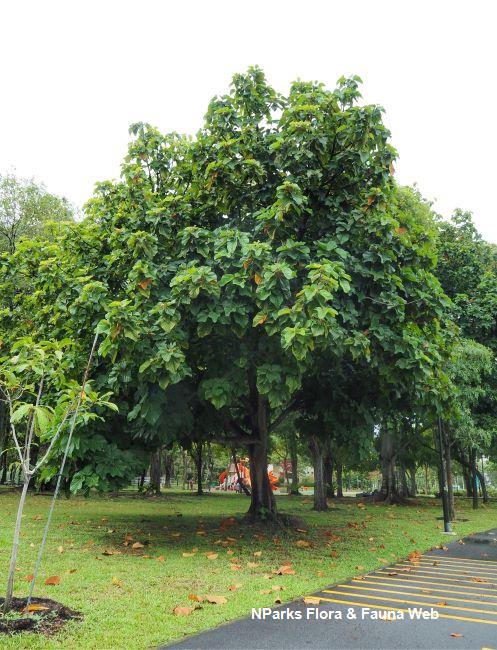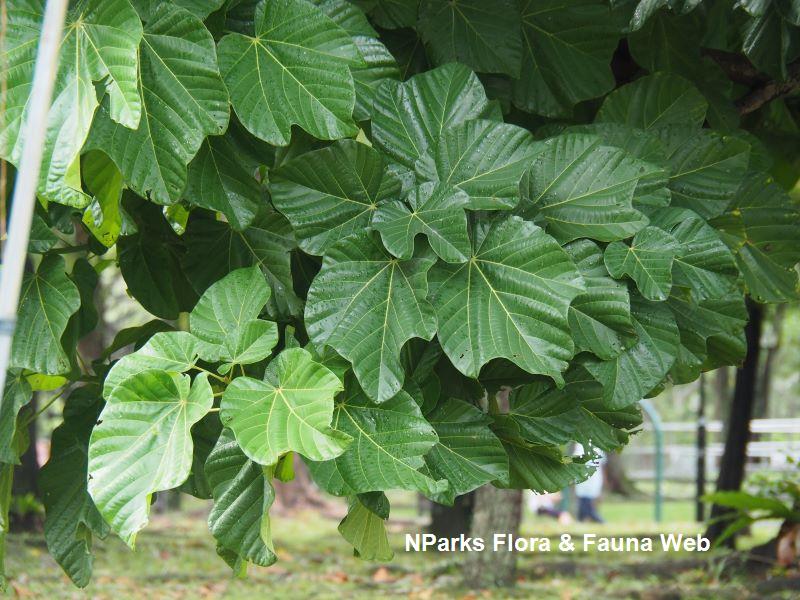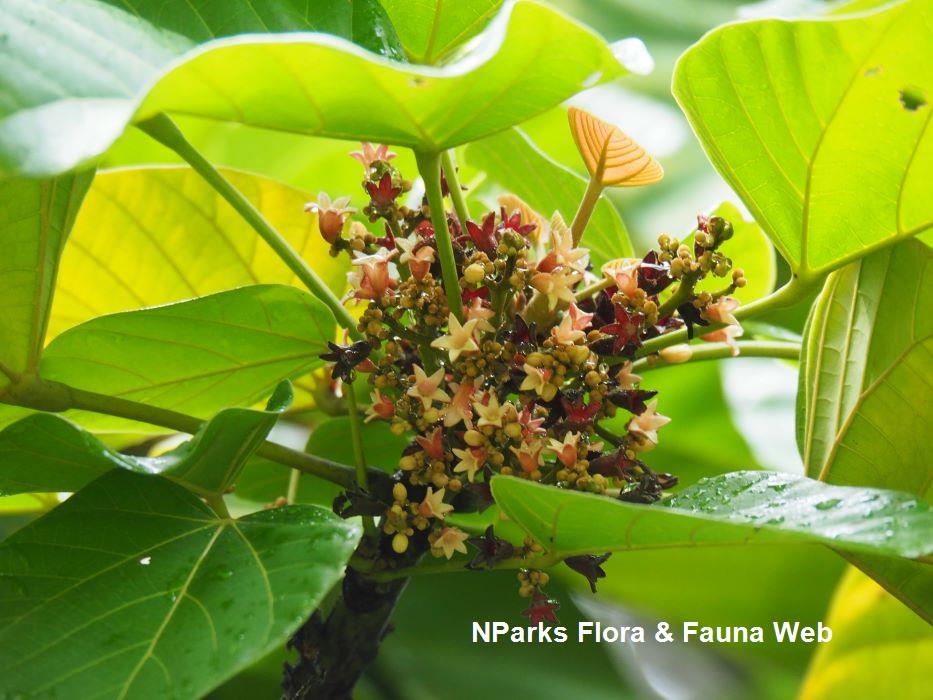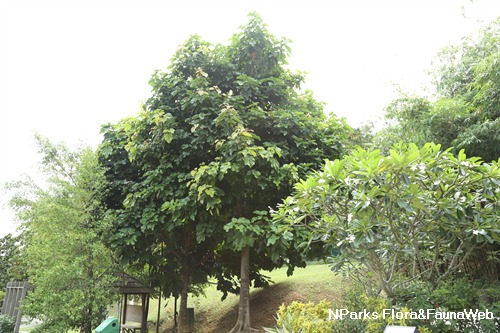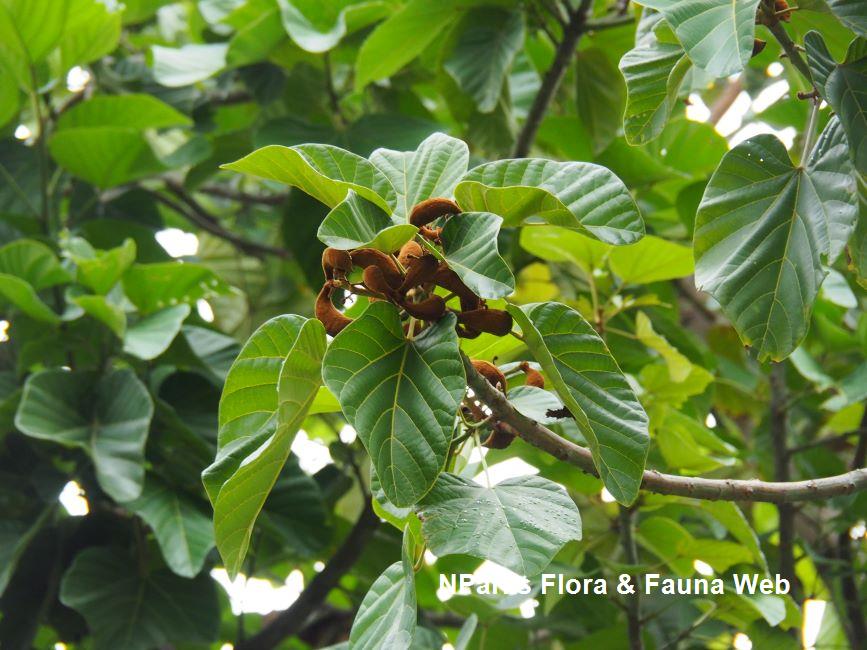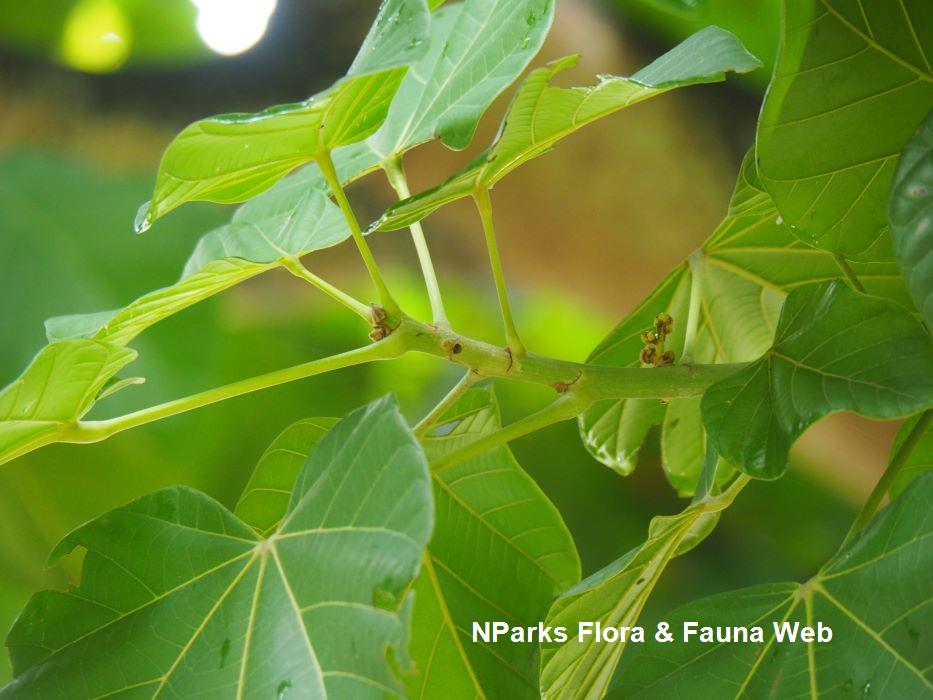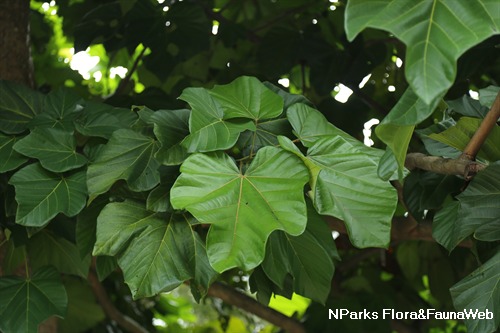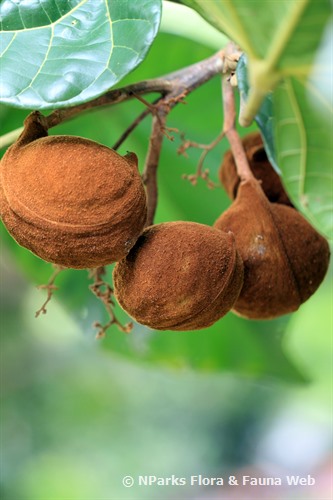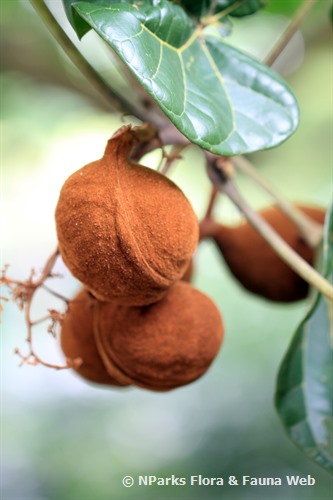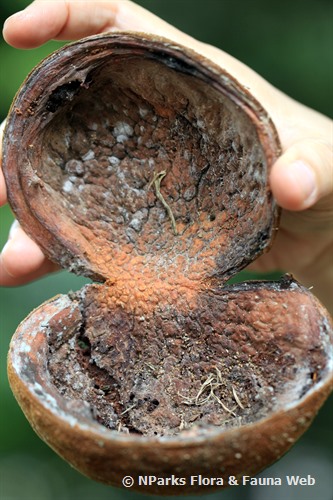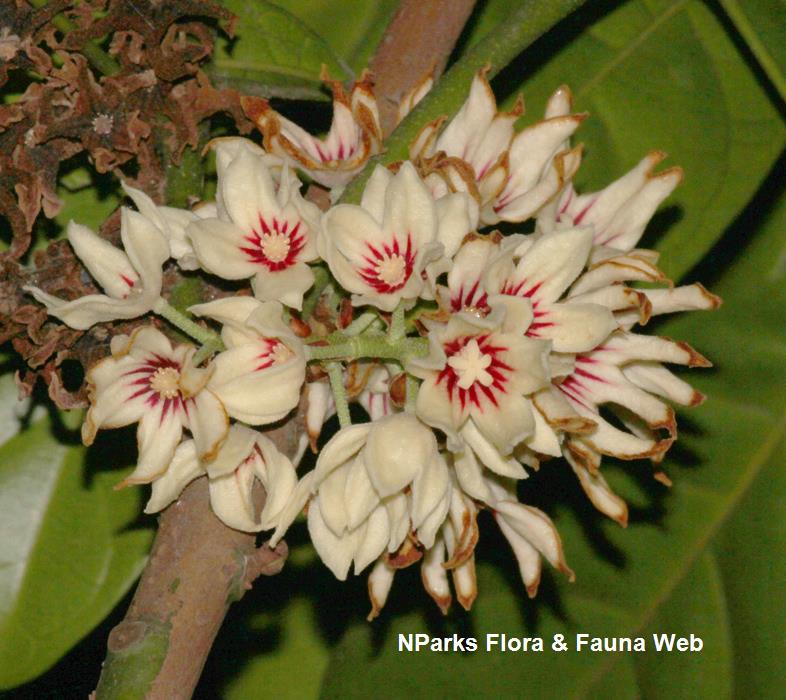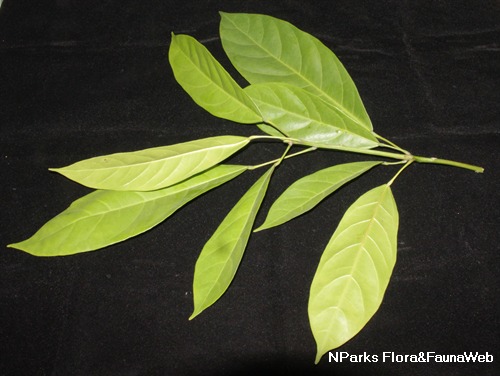
Name
Classifications and Characteristics
| Plant Division | Angiosperms (Flowering Seed Plants) |
|---|---|
| Plant Growth Form | Tree |
| Lifespan (in Singapore) | Perennial |
| Mode of Nutrition | Autotrophic |
| Maximum Height | 35 m |
Biogeography
| Native Distribution | Tropical West Africa |
|---|---|
| Native Habitat | Terrestrial |
| Preferred Climate Zone | Tropical |
| Local Conservation Status | Non-native |
Description and Ethnobotany
| Growth Form | Large evergreen tree, able to grow up to 10 - 35 m tall, and sometimes 50 m tall in its natural habitat. |
|---|---|
| Crown | Spreading crown |
| Trunk | Bark is brown or grey and fissured, girth size can reach up to 1.5 m wide, has small and short buttresses. |
| Foliage | Large green adult leaves, ovate-shaped, measuring about 15 - 60 cm long and 10 - 45 cm wide, top surface smooth and underneath densely tomentose, young leaves 3 - 5 lobed, petiole measuring about 4 - 22 cm long. |
| Flowers | Small white fragrant flowers borne on an inflorescence about 5 - 20 cm long, flower turns from white to pink upon aging, |
| Fruit | Fruit is an ovoid follicle about 20 cm long, splits open when ripen to release seeds. |
| Etymology | Genus Cola is from a vernacular West African name "kola". Species gigantea means unusually tall or gigantic. |
| Ethnobotanical Uses | Cultural / Religious: Heritage Trees : There is currently one individual of Cola gigantea listed as a Heritage Tree in Singapore. It can be found at Singapore Botanic Gardens. To find out more about these trees, please visit the Heritage Tree Register. |
Plant Care and Propagation
| Light Preference | Full Sun |
|---|---|
| Water Preference | Moderate Water |
| Plant Growth Rate | Moderate |
Foliar
| Mature Foliage Colour(s) | Green |
|---|---|
| Leaf Area Index (LAI) for Green Plot Ratio | 3.0 (Tree - Intermediate Canopy) |
Floral (Angiosperm)
| Flower Colour(s) | Purple |
|---|
Image Repository
Others
| Master ID | 1528 |
|---|---|
| Species ID | 2821 |
| Flora Disclaimer | The information in this website has been compiled from reliable sources, such as reference works on medicinal plants. It is not a substitute for medical advice or treatment and NParks does not purport to provide any medical advice. Readers should always consult his/her physician before using or consuming a plant for medicinal purposes. |

